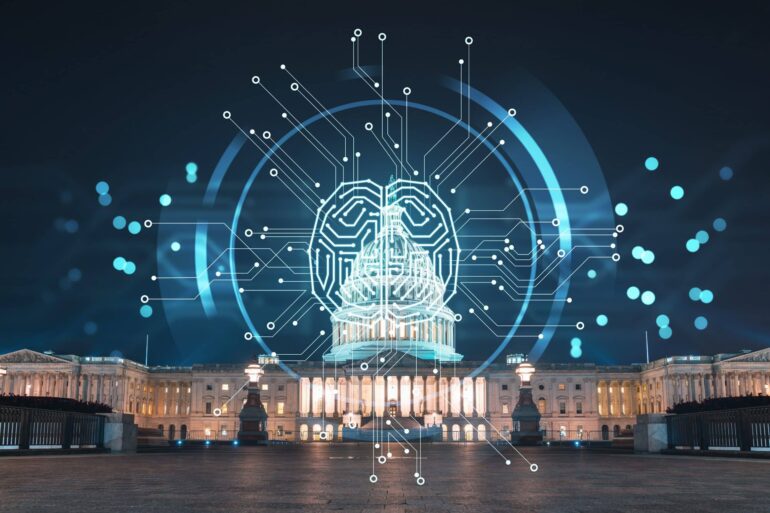- The US federal government is actively seeking AI and AI-related IT professionals amid a competitive talent market.
- Recent appointments of chief AI officers and initiatives like the AI Talent Surge underscore the urgency in acquiring AI expertise.
- Legislative frameworks, such as the AI in Government Act of 2020, have laid the groundwork for identifying critical skills and forecasting workforce needs.
- The Office of Personnel Management (OPM) provides guidance and flexibility for agencies in recruiting AI talent, including innovative hiring strategies and skills-based programs.
- Federal agencies prioritize upskilling existing staff and leveraging AI for enhanced services, with initiatives like the AI Center of Excellence.
- Despite challenges, including competition from the private sector, the government’s unique value proposition and mission-driven work remain attractive for prospective candidates.
- State governments are also focusing on AI initiatives, though they face workforce challenges and competition for talent.
- Strategies like maximizing existing AI tools, upskilling staff, and strategic hiring are pursued to build AI capabilities at the state level.
Main AI News:
In a fiercely competitive talent landscape, the US federal government is strategically leveraging its distinct advantages to attract AI and AI-related IT professionals to the public sector.
Federal agencies are intensifying their efforts to recruit AI talent, appointing chief AI officers and actively seeking individuals with AI-related expertise. The Justice Department’s recent appointment of its inaugural chief AI officer in February marked a significant step in this direction, following similar appointments in other key departments.
The rapid advancement of artificial intelligence, particularly generative AI, has prompted both public and private sectors to prioritize talent acquisition to avoid falling behind. Kyleigh Russ, Senior Advisor to the Deputy Director of the US Office of Personnel Management (OPM), emphasizes the urgent need for the government to tap into this in-demand skill set.
President Biden’s executive order on “Safe, Secure, and Trustworthy Development and Use of Artificial Intelligence” underscores the imperative for the government to harness AI capabilities effectively. It mandates accelerated hiring of AI professionals and comprehensive AI training for employees across relevant fields.
In response, the US government launched the AI Talent Surge initiative, aiming to attract skilled individuals through a dedicated website.
Despite recent initiatives, the groundwork for acquiring AI talent has been laid over several years. Legislation such as the AI in Government Act of 2020 has provided frameworks for identifying critical skills, establishing specialized positions, and forecasting workforce needs.
OPM plays a pivotal role in guiding agencies on identifying, recruiting, and retaining AI talent, offering flexibility and innovative hiring strategies. This includes Direct Hire Authority for technical AI positions and support for skills-based hiring and pay programs.
In addition to chief AI officers, federal agencies are keen on recruiting professionals with AI-enabling skills, including data scientists. The Technology Transformation Services (TTS) at the General Services Administration (GSA) is actively hiring AI and AI-adjacent talent while assisting other agencies in their recruitment efforts.
Despite the competitive market for AI talent, federal officials remain optimistic, citing the government’s unique value proposition, mission-driven work, competitive benefits, and job security as strong draws for prospective candidates.
Olivia Zhu from the White House Office of Science and Technology Policy highlights the surge in interest in federal AI roles since the executive order’s issuance.
Federal agencies are also prioritizing upskilling existing staff on AI competencies. TTS hosts the government’s AI Center of Excellence and AI Community of Practice to facilitate talent development and learning.
The federal government’s focus on bolstering AI capabilities has already yielded significant returns, with agencies like the US Treasury Department leveraging AI for enhanced fraud detection, resulting in substantial financial recoveries.
Furthermore, state governments are following suit, with initiatives to establish AI task forces and centers of excellence. However, challenges persist in hiring AI talent at the state level due to workforce limitations and competition from the private sector.
Despite these challenges, state CIOs like Bill Smith of Alaska remain committed to leveraging AI to improve services and address workforce gaps. Strategies such as maximizing the use of existing AI tools, upskilling staff, and strategic hiring are being pursued to build state-level AI capabilities.
As governments at both federal and state levels navigate the evolving AI landscape, investments in talent acquisition and development will be crucial in harnessing the full potential of artificial intelligence for public service delivery and innovation.
Conclusion:
The US government’s concerted efforts to attract AI talent signify a significant shift in its approach to technology adoption and innovation. As the government competes with the private sector for skilled professionals, investments in talent acquisition and development will play a crucial role in driving public service delivery and advancing AI capabilities across federal and state agencies. This heightened focus on AI talent acquisition underscores the growing importance of artificial intelligence in shaping the future of government operations and service delivery.

